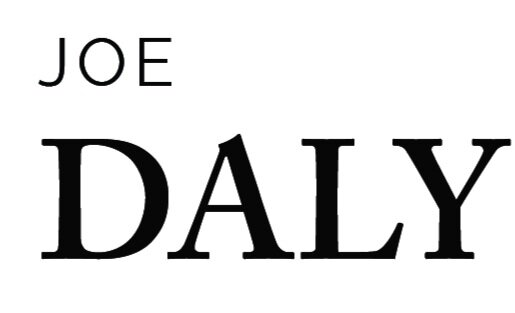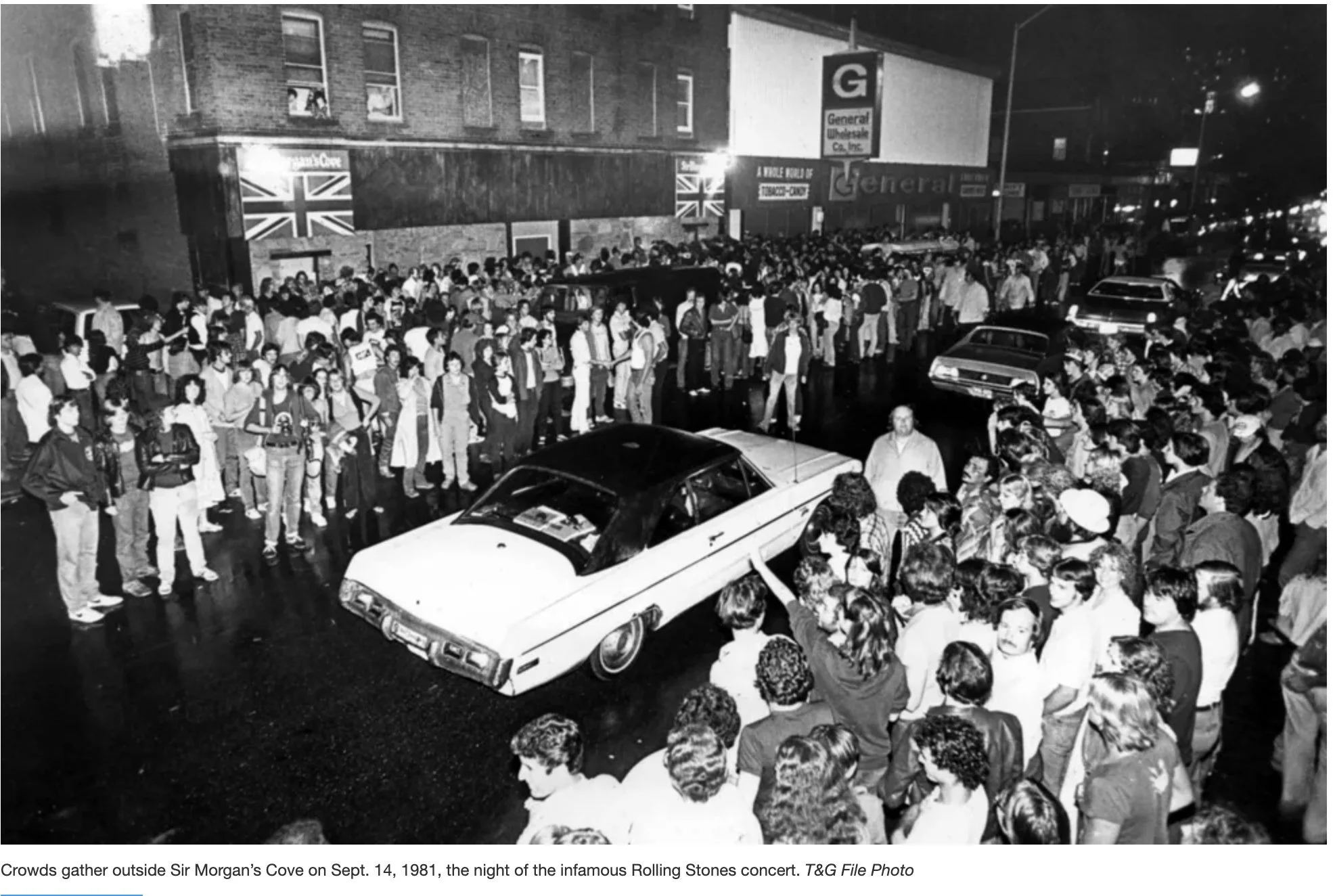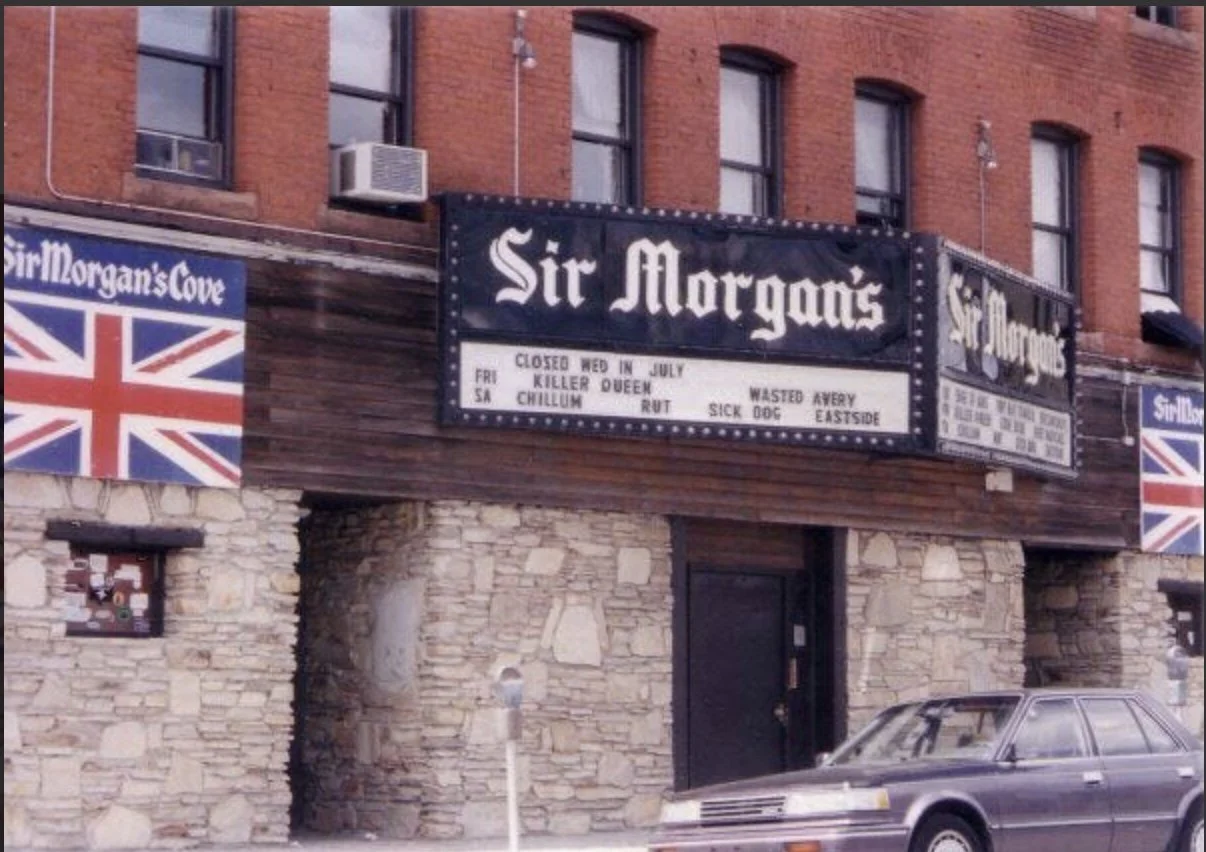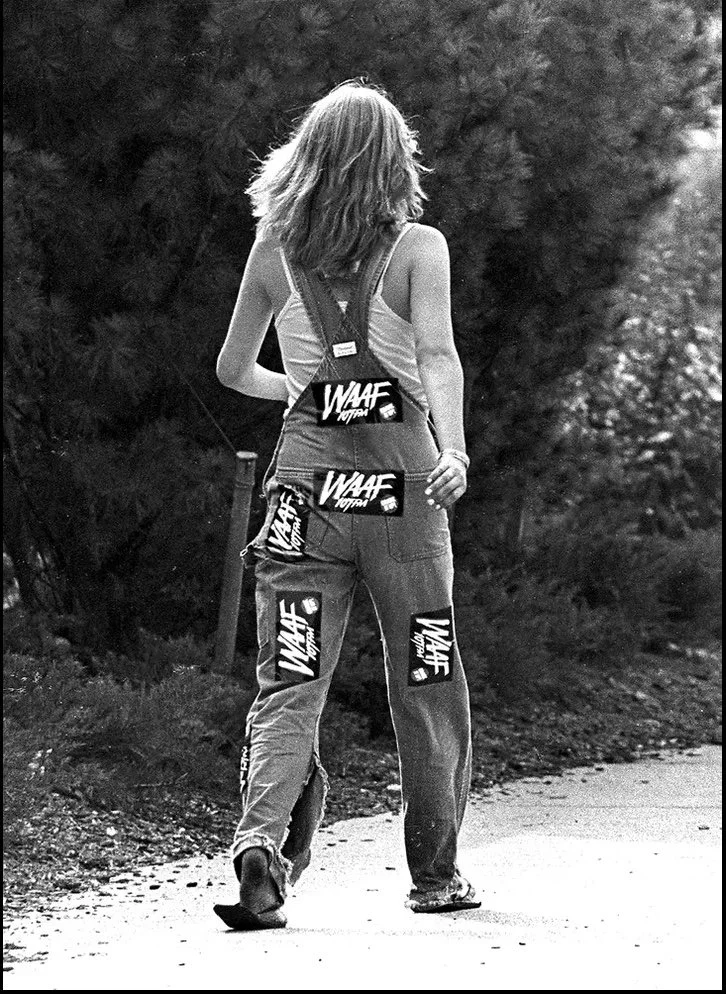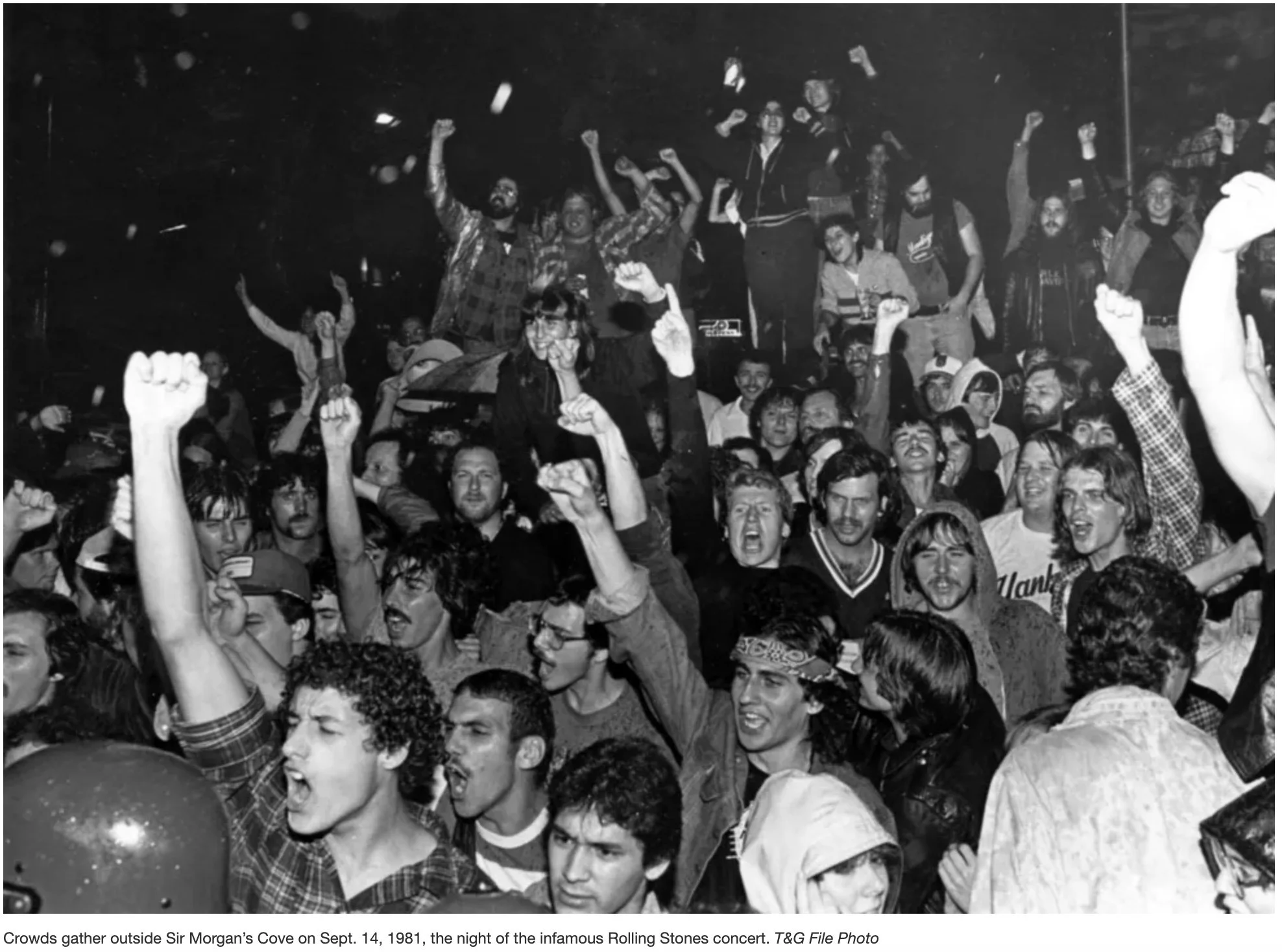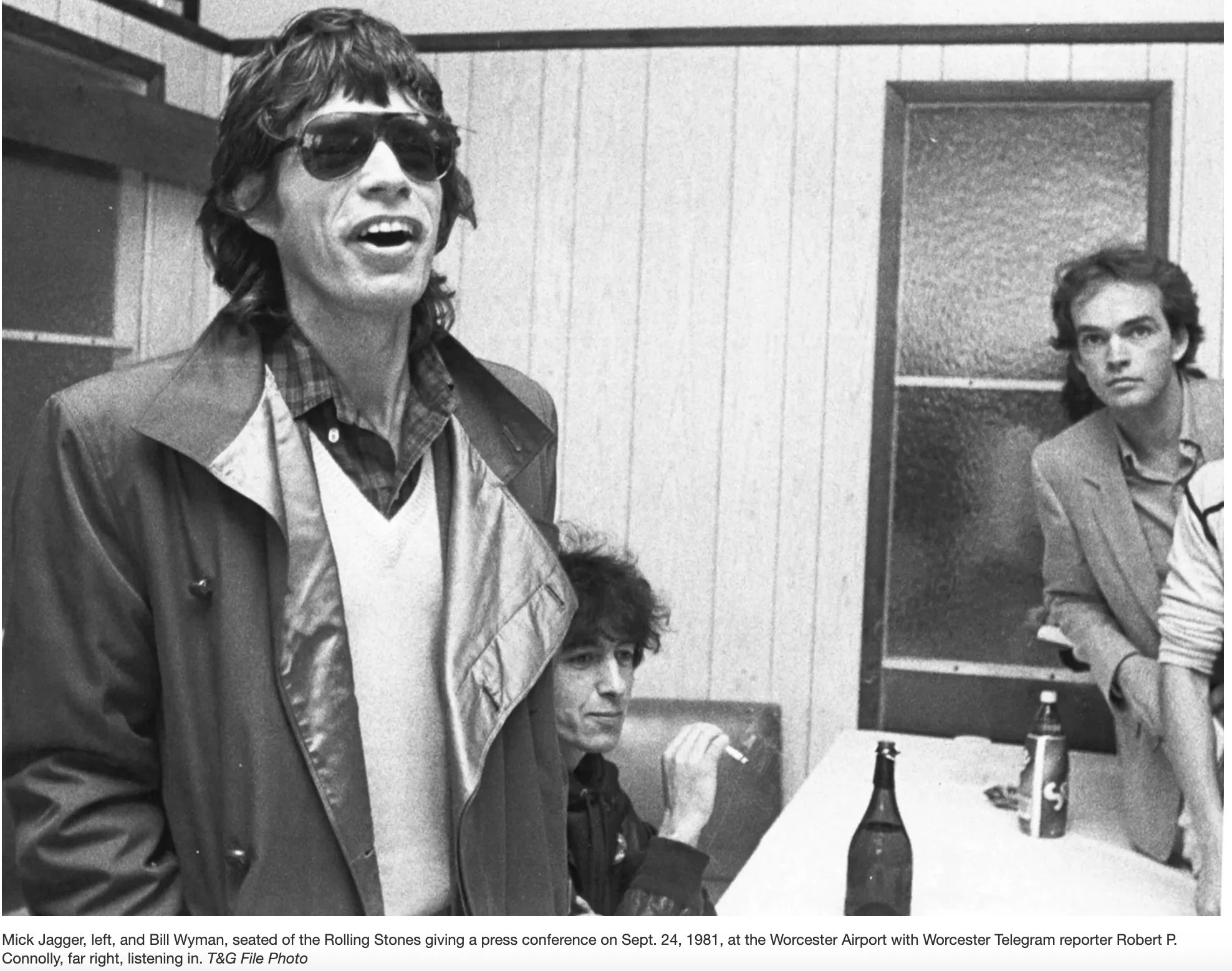Sympathy for the Devil in Worcester: The Night the Rolling Stones Raided Sir Morgan’s Cove
As the child of the morning, rosy-fingered Dawn, arrived on Monday, September 14, 1981, the good people of Worcester, Massachusetts threw their coffee on the stove, blazed the day’s inaugural cigarette and retrieved the Worcester Telegram & Gazette from their stoop, porch or sidewalk. Another day in the grind. None of them could have foreseen the gathering events about to hit them like a hundred-foot tsunami. By midnight, their gritty, steel-gutted city would become the epicenter of the rock universe for one wild, electrifying night.
Over on the city’s perennially-cloudy Green Street, on the ground floor of a dilapidated red brick factory building, sat Sir Morgan’s Cove, a grimy local dive reeking of stale beer and ashtrays and known as much for its hardened regulars as for the raucous rock shows that rattled its walls night after night. Described by some as “dark and dreary,” Sir Morgan’s boasted a tiny stage, complete with a view-obstructing pole at stage left and a men’s room floor with a well-deserved reputation for collapse. The Cove was no trendy dive bar where hipsters came to unwind; it was a rough, menacing lair that attracted folks who thrived on society’s fringe and for whom the human liver was a target for ruthless vandalism. Its name would soon be etched on the walls of rock history.
Just thirty minutes west of Worcester, amidst the bucolic monotony of North Brookfield, the one-and-only Rolling Stones were holed up at Long View Farms Studio. They’d been there since mid-August, rehearsing for the upcoming Tattoo You tour, which would be kicking off in just two weeks at Philadelphia’s John F. Kennedy Stadium. The Stones hadn’t played a gig in three years and they badly needed a tune-up show — the kind of small, no-bullshit affair without barriers, spotlights, ramps or posh backstage accommodations. The Stones needed to rekindle their mojo in front of a crowd who could both challenge and adore them. Worcester, with its blue-collar grit and unpretentious charm, was the perfect crucible.
Keenly aware of the situation At Long View Farms, Rob Barnett, music director at local rock station WAAF 107.3, cooked up an audacious plan. He pitched the idea of a secret show to the band, and thanks to his impeccable timing, they were down. Sir Morgan’s Cove would be the place. Frontman Mick Jagger readily agreed and Ian “Stu” Stewart, the Stones' road manager and pianist, sealed the deal with the owner of Sir Morgan’s, Joe Faucher, at the Paxton Inn a few nights prior. The agreement had the added blessing of the tour’s director, the legendary Bill Graham, who approved the club on the grounds that it was “raunchy.” Logistically, the Cove, with its backdoor stage access and Union Jack out front, was perfect. Reportedly, Mick reserved the right to pull the plug and bail right up to the last minute if the scene turned too insane. Memories of the Cincinnati disaster in December 1979, where 11 people died at a Who concert, remained fresh, as did their own violent debacle at the Altamont Speedway in December 1969, when video captured a member of Hells Angels — there to provide security — stabbing a concertgoer to death. Even though the capacity of Sir Morgan’s was about 300, security at the Cove would need to be tight.
The late Gil Markle, owner of Long View Farms, understood the importance of such a gig to the Rolling Stones. In his memoir, Diary Of A Studio Owner, Markle wrote, “Mick had good reason to be preoccupied. He needed this performance at Sir Morgan's Cove. Philadelphia and nearly 200,000 seats — all sold out — were now only 10 days away. Philadelphia was ready for the Rolling Stones, but the Stones weren't ready for Philadelphia — not ready at all. It had been three years since the band had last played in front of a live audience, and that's a long time. You forget how to do things over a period of three years.”
The morning of September 14th started like any other in Worcester, with the usual hum of factory life and the distant roar of commuters. At around 6:30, WAAF DJ Dave Bernstein, broadcasting from the second floor of the infamous Cocaine Reality Building (literally the building’s name), dropped the bombshell: the Rolling Stones were playing a low-key gig that night, somewhere in New England. The roughly 300 tickets were not available for purchase; instead, the station would be driving around the city, handing out free tickets to anybody spotted wearing a WAAF t-shirt or rocking a bumper sticker on their car.
Unsurprisingly, chaos ensued. The city, normally trudging through Monday morning tedium, erupted into a frenzy. People donned WAAF gear and scoured the streets, desperate to score a ticket to what was quickly becoming the worst-kept secret in the state. By midday, the rumor had solidified: the Rolling Stones would be playing at Sir Morgan’s Cove. And just like that, 4,000 people descended on Green Street like a horde of wildlings amassing at the Great Wall.
Photo credit: Ron Pownall, 1981 (https://rockrollphoto.com/)
By the afternoon, the radio waves roared with the flame-throwing rivalry between WAAF and WBCN 104.1 FM, Boston’s rock radio behemoth. WBCN tried to sabotage the gig by broadcasting the show’s location on air, hoping to create so much chaos in the streets as to force the Stones to cancel and move to Boston. Breathing new life into the concept of tastelessness, WBCN’s Mark Parenteau reportedly said on air, “A little Cincinnati in Worcester tonight!” But Worcester held its ground, even as Green Street morphed into a panorama of rowdiness and revelry.
As night fell, the Stones arrived in a 35-foot Winnebago, squeezing into the alley between the club and a neighboring garage. Outside, seventy-five police officers were dispatched to handle the crowd outside and miraculously, for a city with a well-earned reputation for its pugnacity, only four hearty locals were arrested for disorderly conduct.
At midnight, the Stones took the stage and ripped into a blazing cover of Solomon Burke’s Everybody Needs Somebody To Love, which they had first recorded in 1965. Bug-eyed fans roared, danced and partied with gusto. The set was a masterclass in full-throttle rock 'n' roll, a blend of classics like Under My Thumb, Honky Tonk Women, Sympathy For The Devil and Brown Sugar besides newer tracks like Start Me Up, Neighbours and Hang Fire. Jagger, guitarists Richards and Ron Wood, drummer Charlie Watts and bassist Bill Wyman stood shoulder-to-shoulder, sweating, bobbing and patrolling every inch of the tiny stage, unleashing a driving, guitar-powered squall that left zero doubt as to why they were the undisputed kings of rock and roll.
The barrier between the surging crowd and the biggest rock band in the world consisted of two men: Paul “Tiny” Stacy and Philip “Pinky” Girouard, with Tiny in front of Jagger and Pinky in front of guitarist Keith Richards. Jagger, ever the showman, wanted to engage with the crowd but needed protection from overzealous fans. They picked the right men for the job. Amidst the fervor, Tiny pulled a buck knife from a would-be assailant—a reminder of the night’s volatile energy.
Outside, the scene was equally chaotic. The Worcester Police tactical force, in full riot gear, managed the crowd from the perimeter, giving the fans enough leeway to enjoy themselves without devolving into anarchy. In a stroke of brilliance, Faucher opened the Cove’s doors to allow the Bacchanalian throng outside to hear the performance, preventing a run on the entry.
The concert was an unequivocal triumph. Jagger’s stage presence was mesmerizing. He moved fluidly, interacting with the audience and his bandmates with pumping shoulders, sly grins and the energy of a twenty year-old. John Fraser, an entertainment columnist for Worcester’s Evening Gazette, wrote,. “It was rock ‘n’ roll at its absolute rollicking best. A bit from here and a bit from there: from the new, acclaimed Tattoo You album and last year’s (1980’s) Emotional Rescue all the way back to Under My Thumb from Aftermath and Bo Diddley’s Mona from Now.”
The Stones wrapped up their adrenalized, 90-minute set with Jumpin’ Jack Flash, leaving the crowd in a state of sweat-drenched euphoria. In his true crime tour-de-force, In Cold Blood, author Truman Capote described Worcester as, “a Massachusetts factory town of steep up and down streets that even in the best of weather seemed cheerless and hostile.” A harsh but. not entirely inaccurate assessment, but for one night, this cheerless city was the epicenter of the rock universe.
Ten days later, the Stones kicked off their American tour in Philadelphia. The warm-up gig at Sir Morgan’s Cove stood as a defining moment. In front of 300 exceedingly lucky bastards, the Rolling Stones, rolled back the years and tapped deeply into the supernatural chemistry that had propelled them from the tiny clubs of London onto the world’s greatest stages. As Jagger bid farewell to Worcester, he thanked the city for its hospitality, hinting at a return that, sadly, never came.
Forty years on, the legend of the Rolling Stones at Sir Morgan’s Cove remains a testament to the enduring power of rock 'n' roll. Worcester, for one unforgettable night, held what the whole world wanted—rock 'n' roll magic, up close and personal.
